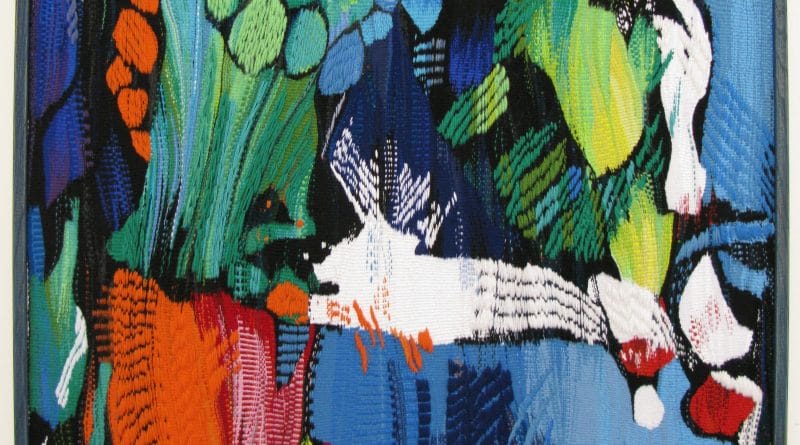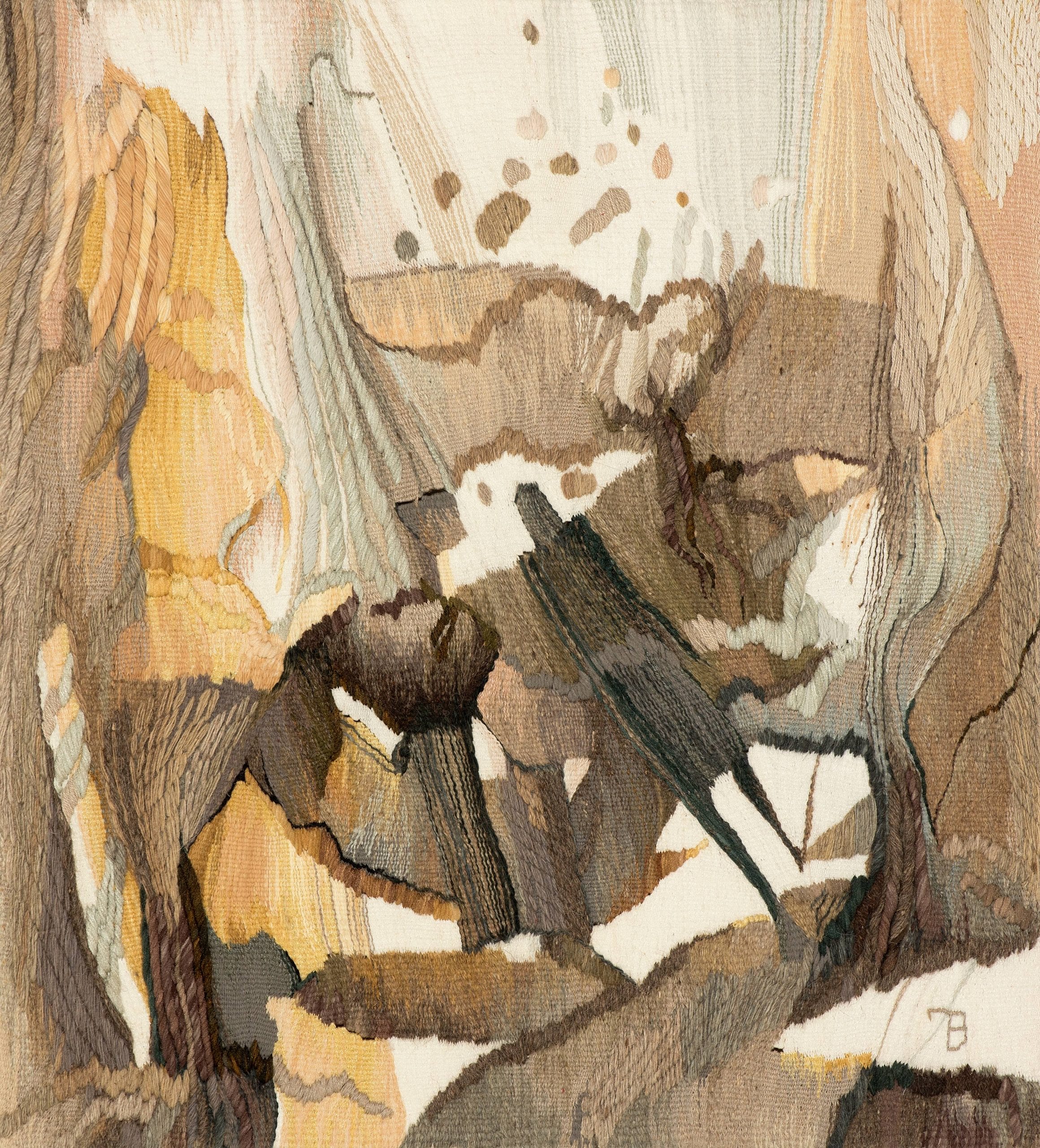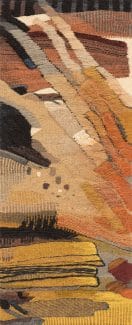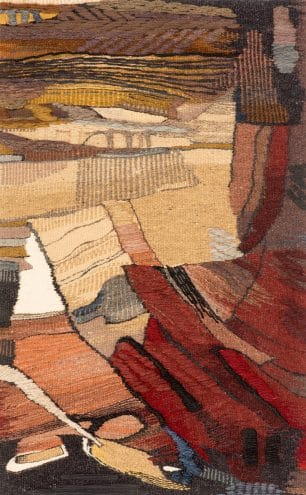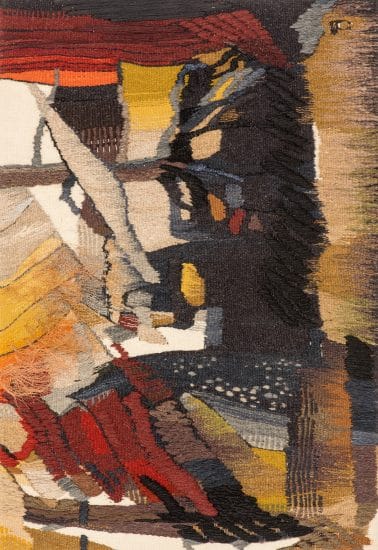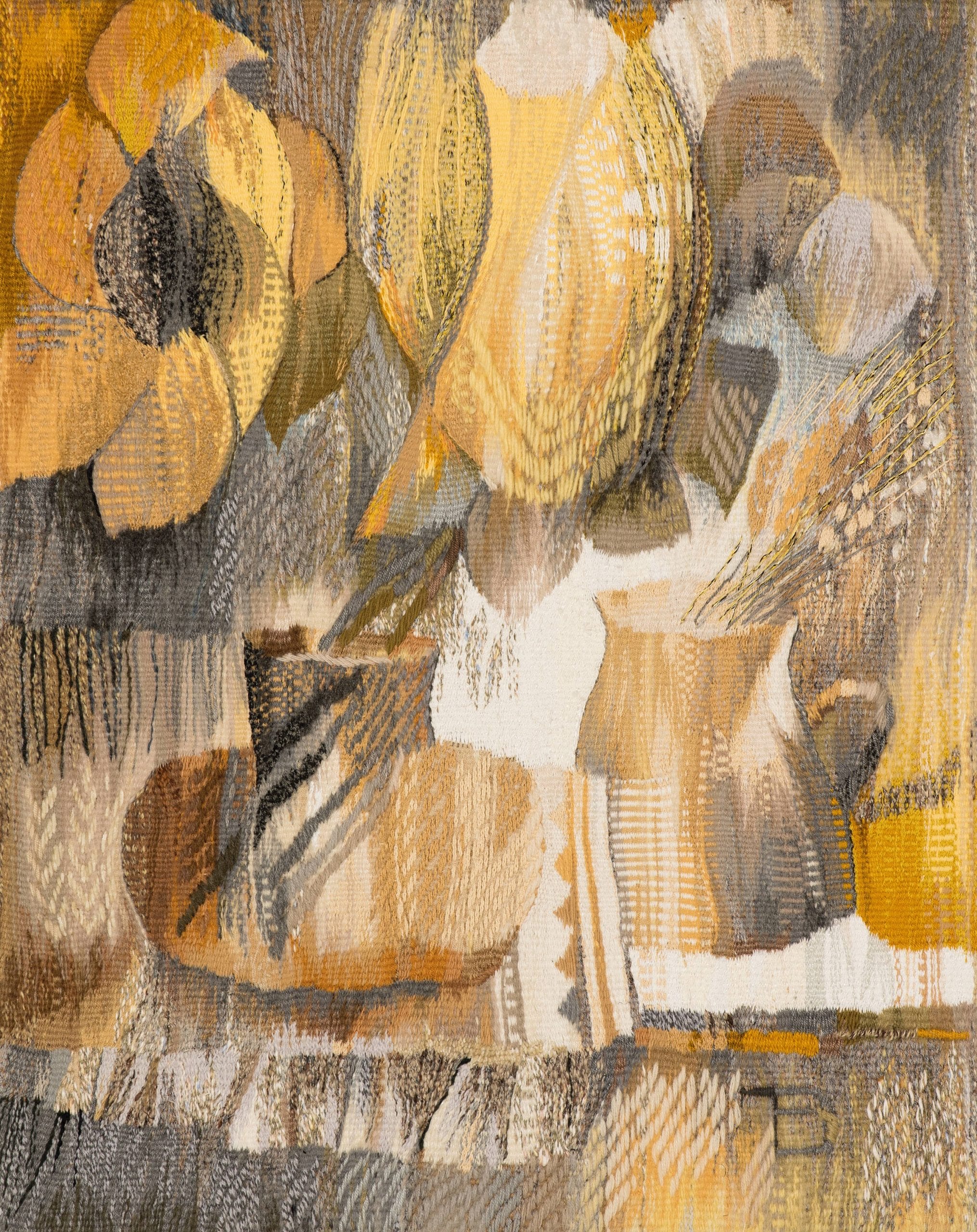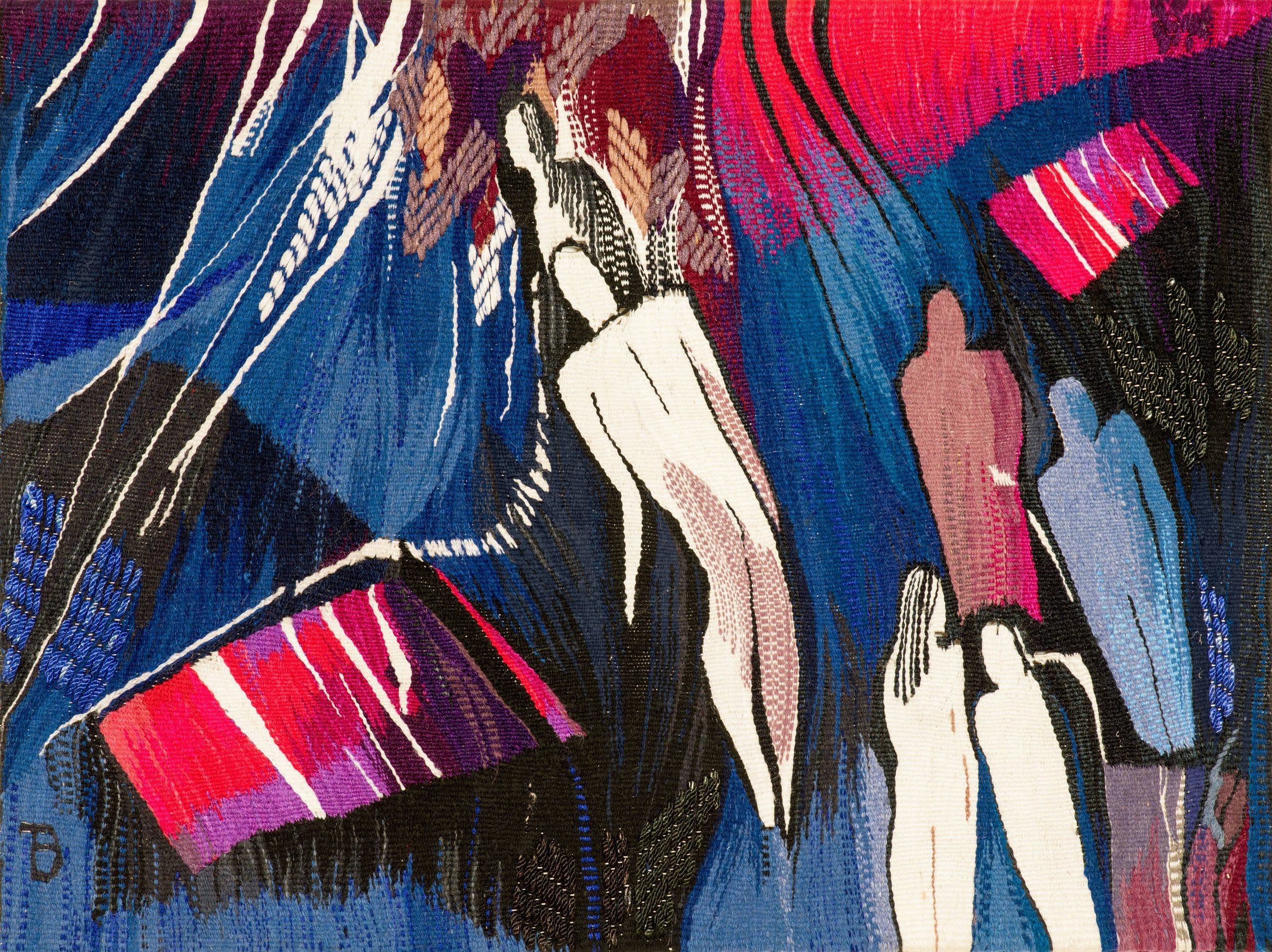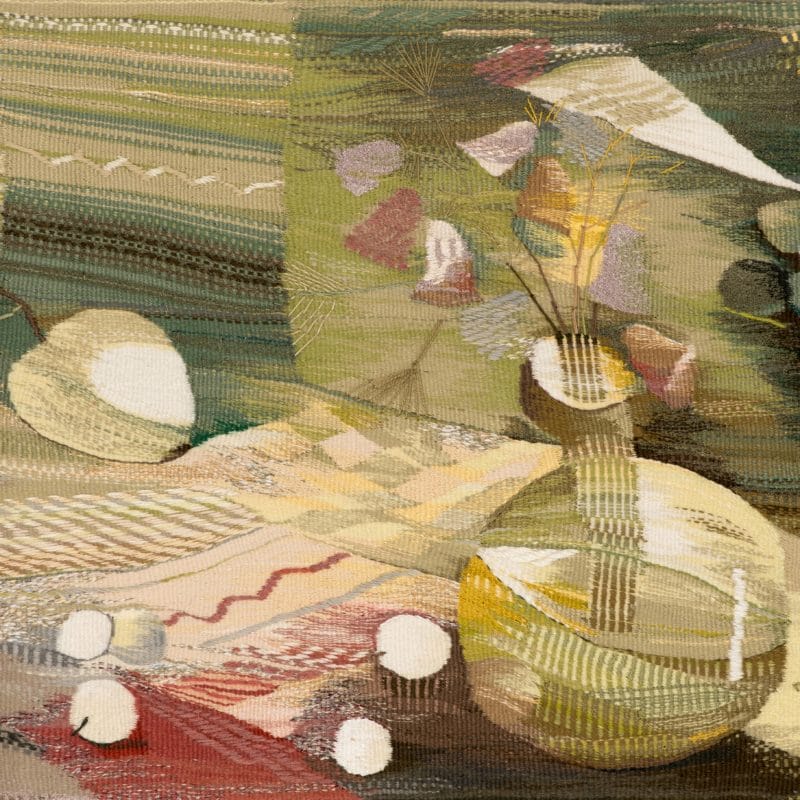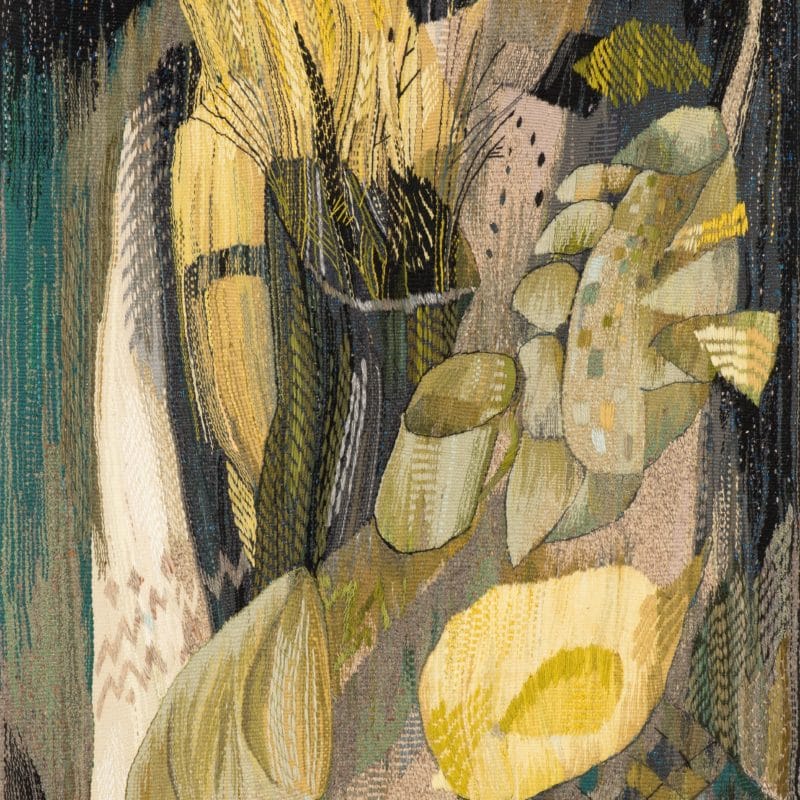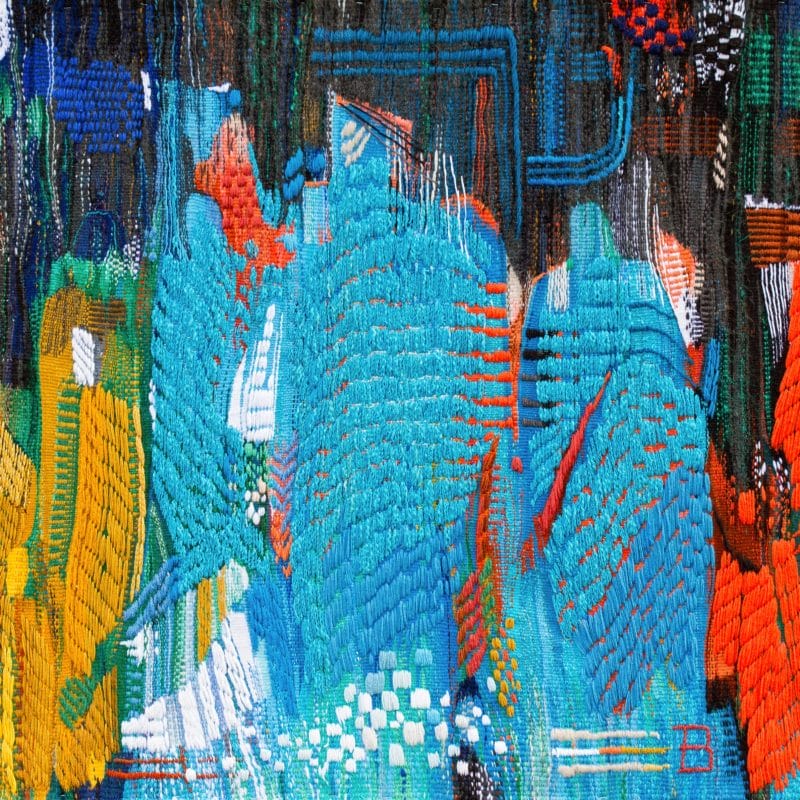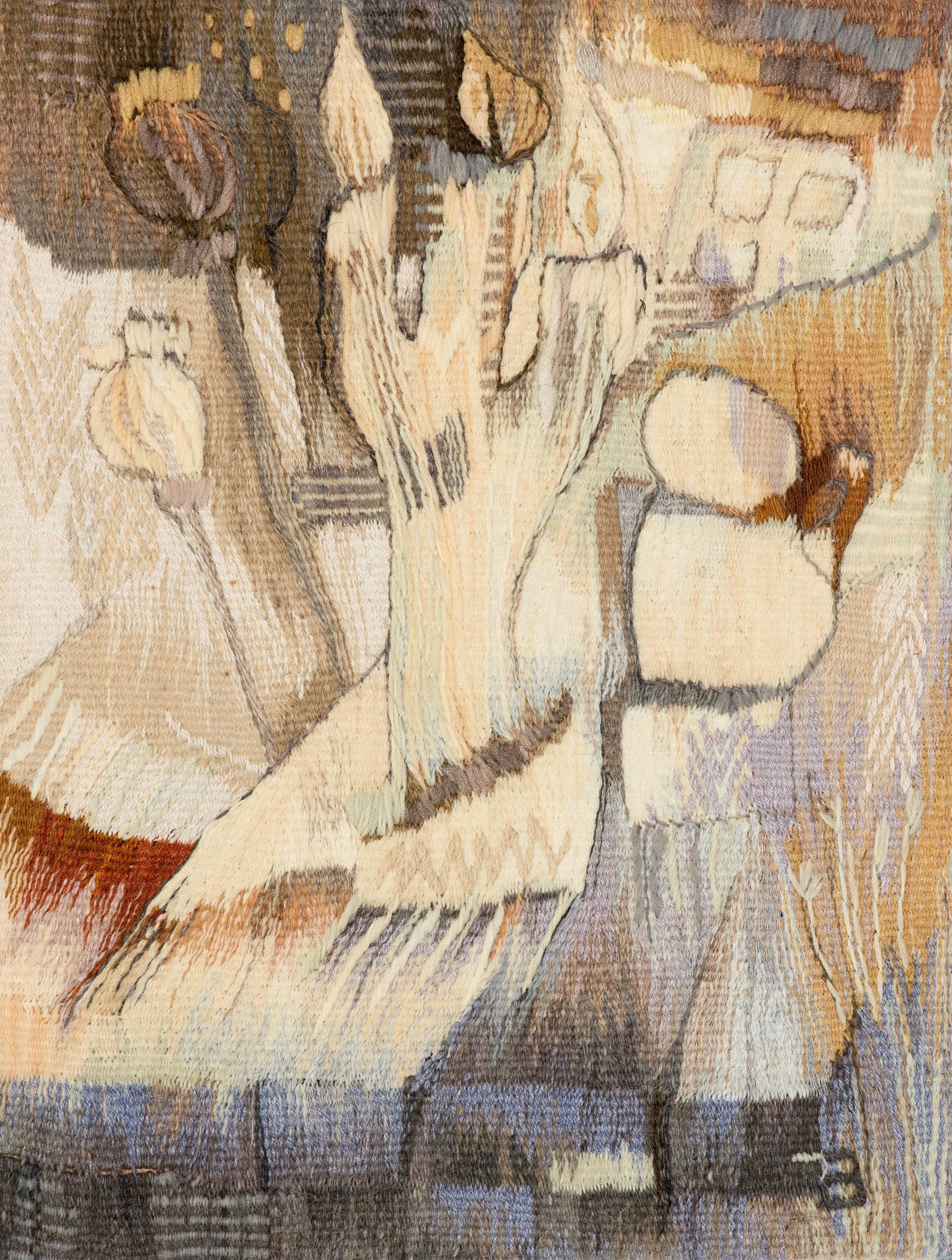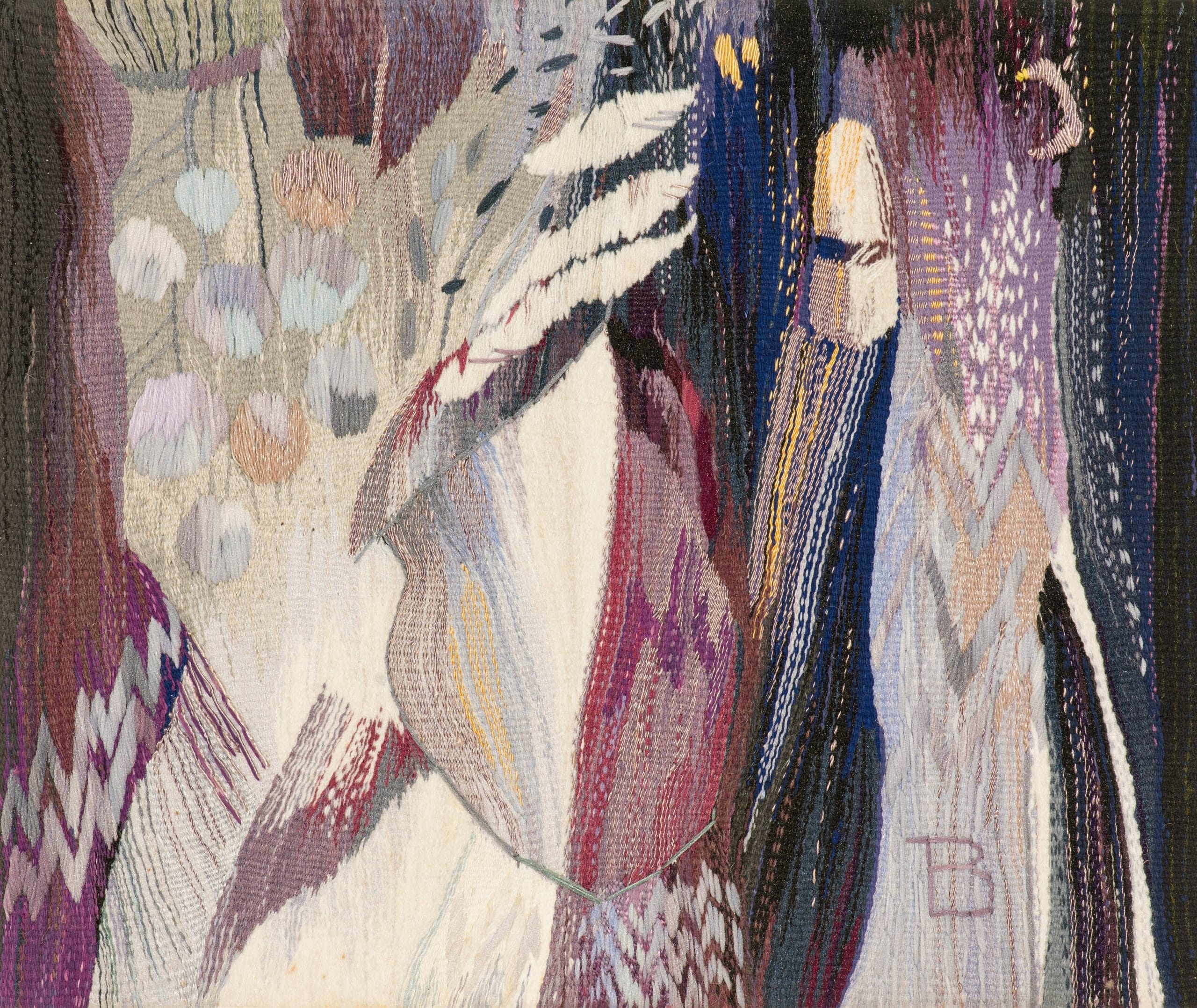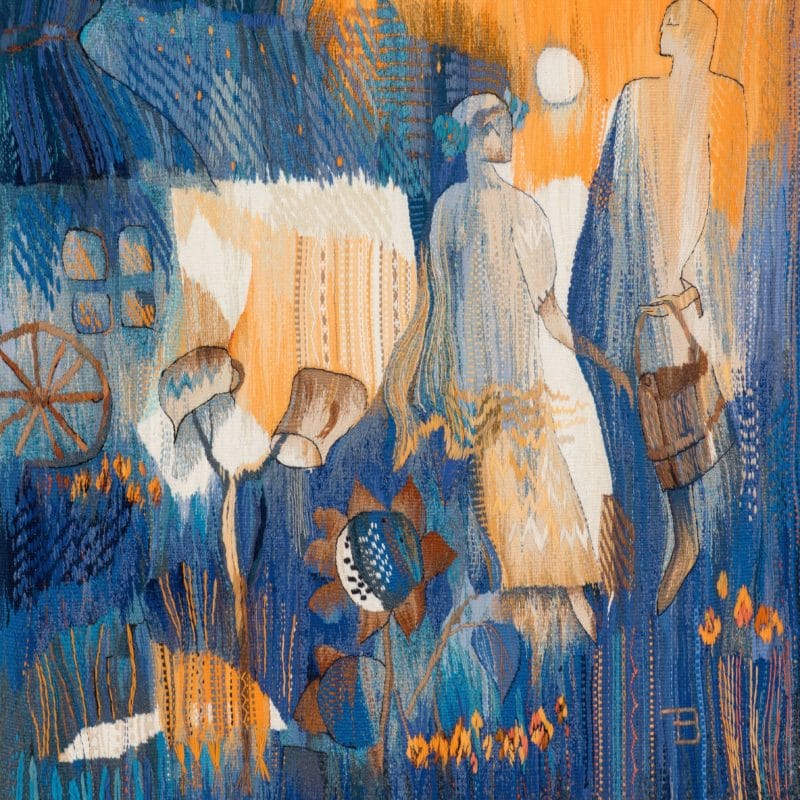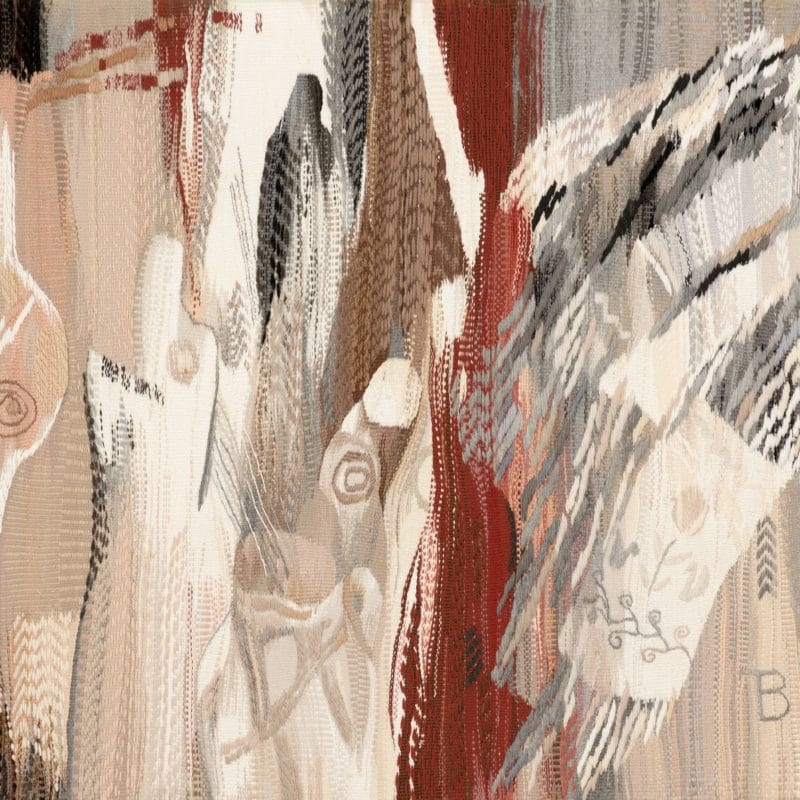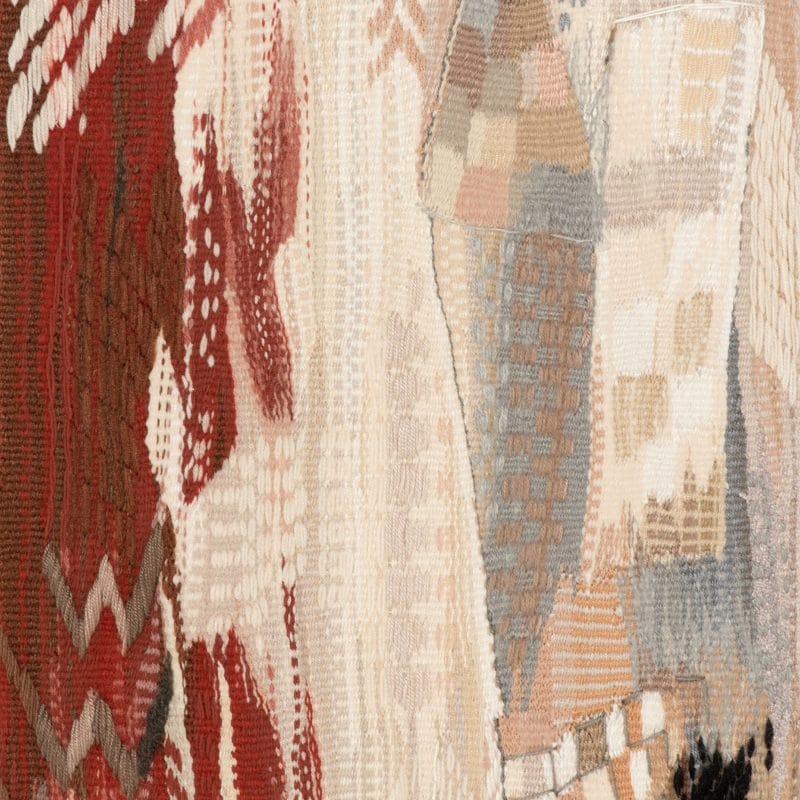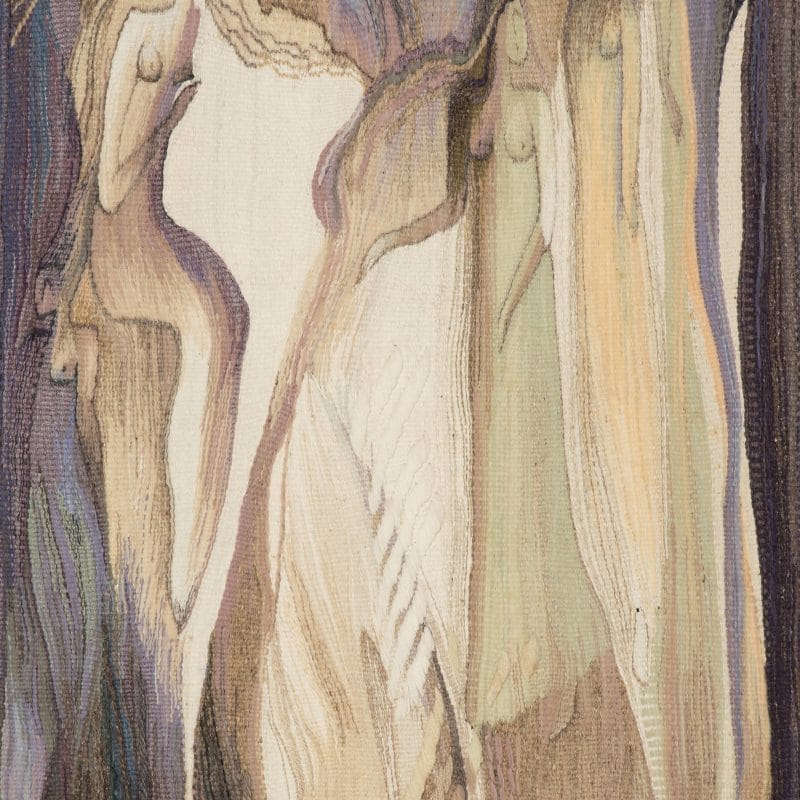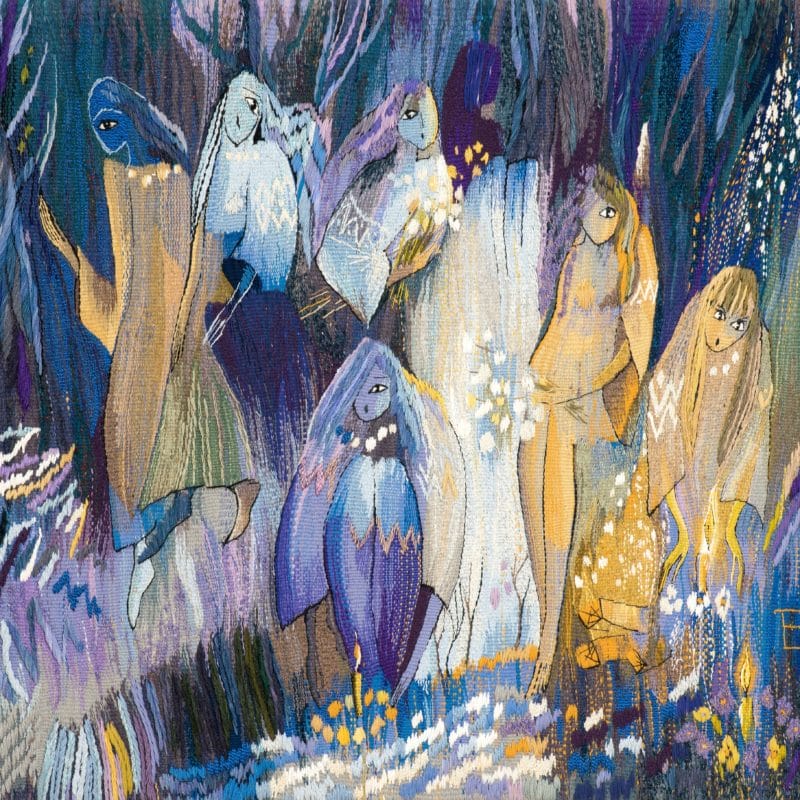The vibrant polychromatic tapestries by Tetiana Vytiaglovska

Tetiana Vytiaglovska is an esteemed textile artist originally from Buchach, (Ternopil region, Ukraine) who works mainly using the hand weaving technique. Her works, mostly non-figurative, find inspiration in the culture, legends and myths of her land of origin and although they mostly refer to the deep traditions of Ukrainian weaving, they become independent of it, revealing the distinctly authentic character of a mature artist emancipating from reference models in her textile production.
Tetiana’s tapestries are exposed in solo and group national and international exhibitions and receive premiums and awards, such as the Certificates of Honor from the Minister of Culture and Arts for significant contribution to the creation of spiritual values and high professional excellence.
Tetiana lives and works in Zavodske Town, Chortkiv district, Ternopil region, as head of department and teacher at the School of the Arts.
Here are the links to the artist’s social media sites:
“Wind and Umbrellas”, diptych, wool, artificial fibers, weaving, 113×88 and 113×88, 2008, copyright Tetiana Vytiaglovska
Tetiana can you tell us how and why you started your career in textile art and why you chose weaving?
Drawing has always been my favorite activity since childhood. I got acquainted with weaving in the art college, where, in the process of studying I got fascinated by the traditions and innovations in the weaving of Ukraine and the world. I realized that it was just something for me. The knowledge and skills I gained in college, I’ve developed and consolidated at the Lviv Academy of Arts.
“The Earth Breath”triptych, wool, artificial fibers, weaving, 84×55, 84×55, 84×55, 1990, copyright Tetiana Vytiaglovska
Improvisation, randomness, experimentation, study, rules, design. Which of these aspects has an essential or prevailing role in the process of the birth of your textile work?
Improvisation, sometimes with elements of an accident. A great impact on my work has constant experimentation, deep study of the material and also rules that have developed over the years of creative work. All of that helps me to create a sketch of the future work. These aspects are decisive for creating an art piece.
In the story art, you have a story as the subject and then experiment and improvise on its basis; while in the abstract one you can take an improvisation or sometimes even an accident as the basis and as the result of a creative search.
Is it technique or creativity first? What do you think determines the success of an artwork. When does creativity risk being suffocated by technique?
I cannot separate technique and creativity, because technique is also a part of creativity. It gives work a unique charm, sometimes dynamics, authenticity. My creativity never risks being suffocated by technique. Each part of creating a tapestry from the first sketch to the finished work is creativity that I love and appreciate in its own way.
The success of an artwork is when I am able to convey to the viewer my emotions – love, pain, experiences, joy and other, expressed by a thread.
“The Green Daybreak”, triptych, wool, artificial fibers, weaving, 110×92, 92×71, 92×74, 2016, copyright Tetiana Vytiaglovska
Can you tell us about “The Rhythms of the Light” triptych?
“The Rhythms of the Light” is an abstract work in three parts, united by a common theme, where is noticeably traced to the rhythmicity of colored spots and lines, that creates mood and harmony.
Playful rays of an autumn sun, that intertwine gently fallen leaves, embedding with them charming patterns on warm, not yet sealed by frost, earth. Sometimes picked up by the wind, they playfully rustle under the feet, as a reminder of the last warm days.
They seem to bathe in the rays of the autumn sun, reflecting the light, rhythmizing it with their unique dance.
“The Rhythm Of The Light”, triptych, wool, artificial fibers, weaving, 98×67, 98×61, 98×40, 1994, copyright Tetiana Vytiaglovska
What makes your tapestries traditional and what makes them contemporary? What is the relationship between tradition and innovation in your artwork?
I think that my works are not traditional, both in composition and performance techniques, though, to some extent they are based on deep traditions of Ukrainian weaving.
I’m trying to be independent and maintain authenticity in my art, to be recognizable among other artists, that also create in hand weaving technique.
Modernity in art is a rhetorical question, the main thing is to be yourself and to convey your search to the viewer.
My works often reflect innovations that are built on the traditions of my people. Legends, myths, sacredness, our holidays and customs are enriching my creativity, making it unrivaled, adding modern sparkles in the understanding of work that I do.
Grandma’s Embroidered Towels”, diptych, wool, artificial fibers, weaving
148×85 and 148×110, 2008, copyright Tetiana Vytiaglovska
Are there inspirations and influences from other weaving cultures in your tapestries?
I often look at works made in different parts of the world. They are cognitive and sometimes inspire to create something new, but no other culture in the world has a direct influence on me.
I consciously try not to follow the heritage of cultures of other nations in my work, while remaining a distinctive Ukrainian artist with my personal handwriting in this kind of art that has developed over the years of my work.
How has your work evolved over the years? Are there important stylistic, aesthetic or conceptual differences between your first tapestries and the most recent ones?
During the period of creativity, my works were always filled with some special meaning. But there was no particular difference in stylistics, aesthetics, concepts of composition construction, or performance in the material. My creativity is like a chronicle of my life. The emotions I received were transformed into sketches that were selectively embodied in canvases. Whether it was a street after a rain, a still life with an apple, or a pleasant memory of meeting my friends. All of this fell into the plot of my compositions.
Consciously I did not change my style to assert my creative handwriting in the art of textiles.
What is the source of your inspiration today? Is there a theme, a subject or a concept around which all your artwork today revolves?
The source of inspiration today is the picturesque colors of native nature: a light touch of the wind, the sun casting its delicate autumn beam on golden crimson trees, or the quiet whisper of a pure wellspring, that fills me with emotions, creating a special art mood and a desire to convey this energy of beauty, uniqueness, love and tenderness, of that boundless delight that erupts in my mind…
The depiction of Ukrainian traditions, holidays, customs and rituals still remains one of my favorite topics. My people have a centuries-old culture. It is a powerful treasure for the artist, where the philosophy of life is laid down from the depths of the ages. I immerse myself in this world with my paints and threads, leaving a part of myself in it, and allowing my viewer to touch it.
I’m trying to bring to people the idea of good, love and beauty, sometimes cruel and evil world. The energy of the beauty, bestowed on us by God on this Earth, threaded through me, remains in the intricate interweaving of my works; as a small outlined spiritual world of harmony.
Today, in your opinion, what is the space that textile art has within the wider scene of the Major Arts? Has textile art finally managed to win the right to no longer be considered a Minor Art?
In the context of the artistic space, art textile takes its proper place and hand weaving in particular. Interesting experiments of the creators elevate it above the traditional purpose. The modern understanding of textiles is directed not only to the architectural subjective environment but sometimes it can play the role of an important component of the modern cultural space. Experimenting artists take it to a whole new level. I think it’s inappropriate to ask questions of the minorities of a particular art. Textiles, along with painting, sculpture and other forms of art, always find its proper place in the contemporary architectural and cultural space, enriching the spiritual world.
What are you working on right now?
As an artist who loves her work, I live with creative thoughts and plans. I want my days to be as interesting, bright and unique as possible. Most of all, I love to work late at night when everything is quiet: nature, the street, school with my noisy students (I teach children drawing, composition and painting at an art school). At that moment I immerse myself in my creative world. Quiet sounds of music and my hands unconsciously reach for the pencil and brush. The first watercolor spots are born on white sheets, shimmering and complementing each other, they merge into some abstract compositions, and later the magic of a pencil makes them complete sketches.
I make many such sketches, most of which remain in my folders inactive. I realize a small part of them in weaving, others I give life in painting on silk (batik). This is my second hobby after tapestry. This is what I do now. Decorative still-life on a background of traditional Ukrainian embroidered towels, sometimes just a play of colored spots and lines, that creates a unique world of light and shadow, warm and cold, echoing some special festive mood…
Аnd tomorrow there will be a new day, new thoughts, new emotions, new experiences, new works…
